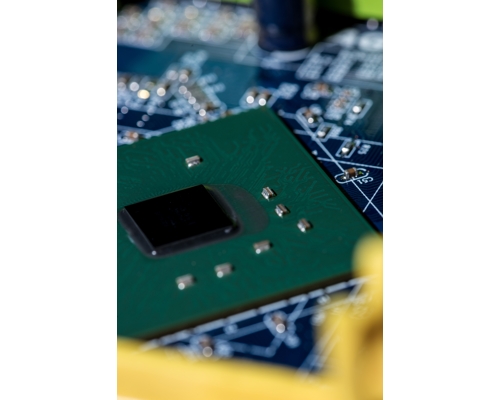Roartis IQ-BOND 2409-LV
IQ-BOND 2409-LV is a solvent-free, one-component, pre-mixed, thermoset epoxy based adhesive, developed for applications where fast cure is required for short cycle times. It’s the lower viscosity version of IQ-BOND 2409.
The chemistry of IQ-BOND 2409-LV has been selected to resist temperatures over 200°C for short periods of time, and has been used in lead-free solder processes with peak temperatures as high as 270°C.
Unlike many other single-component adhesives, characterized by a short potlife, IQ-BOND 2409-LV has a very long potlife of > 1 week at room temperature.
IQ-BOND 2409-LV was especially designed to assure good flow in small gaps, even at moderate temperatures. To facilitate and accelerate the underfilling process, it can be considered to heat the substrate and/or the IQ-BOND 2409-LV to about 50 – 60 °C.
When fully cured, IQ-BOND 2409-LV is resistant to moisture, cleaning agents and dilute acids and bases. Also it exhibits very good high thermal resistance, for example typical SnPb-, as well as lead-free soldering processes.
IQ-BOND 2409-LV is a solvent-free, 100% solids material.
For cleaning un-cured IQ-BOND 2409-LV from stencils, screens, squeegee, or other equipment, the use of IQ-CLEANER 9500 is recommended.
Product properties:
- Appearance: Black
- Chemistry: Epoxy
- Odor: Faint
- Mix-Ratio: Not Applicable – pre-mixed single component adhesive
- Fineness: < 10 μm
- Viscosity: 4.000 mPa.s (Brookfield RVII-CP51, 25°C at 5 rpm)
- Density: +/- 1,1 gr/cc
- Shore Hardness: ~ 85 D
- Tg: ~ 110°C
- CTE1: ~ 60 ppm
- CTE2: ~ 200 ppm
- Density: ~ 1,15 gr/ml
-
Cure Speed:
- 30 “ @ 175°C
- 2 – 3 minutes 150°C
- 5 minutes 120°C
For good mechanical strength, cure according above conditions is recommended, and a minimum of 100°C required. The final bond strength will depend on the residence time at the given cure temperature. Typically, a higher curing temperature, as well as a longer cure time will result in higher adhesion strength, and improved polymer crosslinking.

